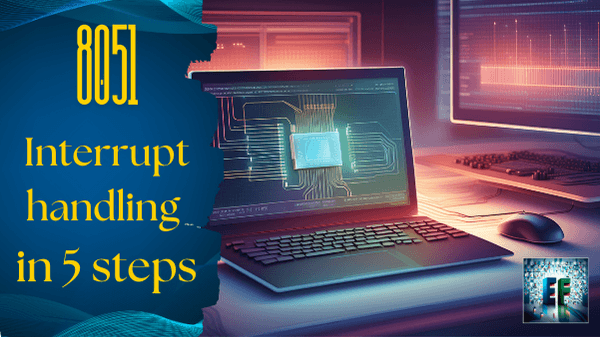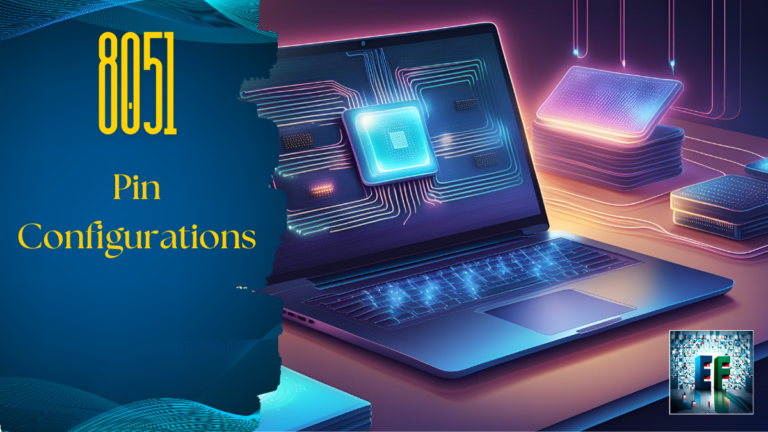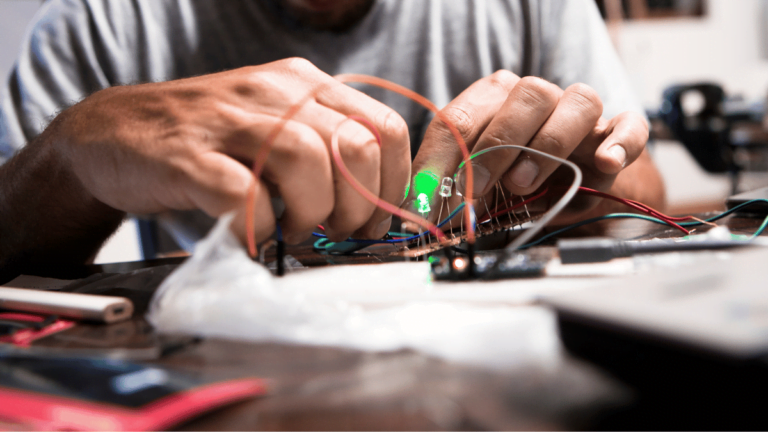In the realm of microcontroller programming, mastering interrupt handling is a crucial skill that separates novice developers from seasoned professionals. When it comes to the 8051 microcontroller, understanding and implementing interrupts can significantly enhance the efficiency and responsiveness of your embedded systems. In this comprehensive guide, we’ll take you on a journey from basic concepts to advanced techniques, ensuring you become an expert in 8051 interrupt handling in just five easy steps.
Table of Contents
Step 1: Understanding the Basics of 8051 Interrupts
Before diving into the intricacies of interrupt handling, it’s essential to grasp the fundamental concepts. Interrupts are hardware-triggered events that momentarily pause the main program execution to handle specific tasks. The 8051 microcontroller offers a variety of interrupt sources, including:
- External interrupts: Triggered by external hardware events
- Timer interrupts: Generated by internal timers
- Serial interrupts: Activated during serial communication
- Watchdog timer interrupt: Used for system monitoring and recovery
Each interrupt source has a unique vector address in the 8051’s memory, allowing the processor to jump to the appropriate interrupt service routine (ISR) when triggered. Understanding these basics lays the foundation for effective interrupt handling in your 8051 projects.
Step 2: Configuring Interrupt Enable Registers
To harness the power of interrupts, we must first configure the appropriate enable registers. The 8051 provides several registers for this purpose:
- IE (Interrupt Enable): Controls the global interrupt enable and individual interrupt sources
- IP (Interrupt Priority): Sets priority levels for different interrupt sources
- TCON (Timer Control): Configures external interrupt triggers and timer modes
Let’s explore how to set up these registers for optimal interrupt handling:
// Enable global interrupts and external interrupt 0
IE = 0x81; // 1000 0001 in binary
// Set high priority for external interrupt 0
IP = 0x01; // 0000 0001 in binary
// Configure external interrupt 0 for falling edge trigger
TCON = 0x01; // 0000 0001 in binary
By carefully configuring these registers, we ensure that our 8051 microcontroller responds to interrupts as intended, maintaining system stability and performance.
Step 3: Writing Effective Interrupt Service Routines (ISRs)
The heart of interrupt handling lies in well-crafted Interrupt Service Routines (ISRs). These are specialized functions that execute when an interrupt is triggered. To create efficient ISRs, consider the following best practices:
- Keep ISRs short and fast: Minimize the time spent in interrupt context
- Use volatile variables: Ensure proper synchronization between ISRs and the main program
- Save and restore context: Preserve CPU registers to maintain program integrity
- Avoid blocking operations: Don’t use delay functions or infinite loops within ISRs
Here’s an example of a well-structured ISR for external interrupt 0:
void ISR_ExternalInterrupt0(void) __interrupt(0)
{
// Disable interrupts to prevent nested interrupts
EA = 0;
// Perform quick interrupt handling tasks
LED = !LED; // Toggle an LED
// Re-enable interrupts before returning
EA = 1;
}
By following these guidelines, we ensure that our interrupt handling routines are efficient, reliable, and non-disruptive to the main program flow.
Step 4: Implementing Interrupt Priorities and Nesting
As your 8051 projects grow in complexity, you may encounter situations where multiple interrupts occur simultaneously. This is where interrupt priorities and nesting come into play. The 8051 supports two priority levels: high and low. By properly configuring priorities, we can ensure that critical interrupts are serviced promptly.
To implement interrupt priorities:
- Use the IP register to set priority levels for different interrupt sources
- Configure the interrupt nesting behavior in your code
Here’s an example of how to set up interrupt priorities and enable nesting:
// Set high priority for external interrupt 0 and timer 0 interrupt
IP = 0x03; // 0000 0011 in binary
// Enable interrupt nesting in the main program
EA = 1; // Global interrupt enable
ET0 = 1; // Enable timer 0 interrupt
EX0 = 1; // Enable external interrupt 0
// In the ISR for high-priority interrupts
void ISR_HighPriority(void) __interrupt(0)
{
// Re-enable interrupts to allow nesting
EA = 1;
// Handle high-priority interrupt tasks
// ...
}
By mastering interrupt priorities and nesting, we can create robust and responsive 8051 systems capable of handling complex real-time scenarios.
Step 5: Advanced Techniques and Best Practices
As we reach the pinnacle of 8051 interrupt handling expertise, it’s time to explore some advanced techniques and best practices that will elevate your skills to the next level:
- Interrupt-driven state machines: Implement efficient state machines using interrupts to manage complex system behaviors
- Soft interrupts: Create software-triggered interrupts for flexible task scheduling
- Interrupt latency optimization: Fine-tune your code to minimize interrupt response times
- Watchdog timer integration: Use the watchdog timer interrupt for system health monitoring and recovery
- Interrupt-safe shared resources: Implement proper synchronization mechanisms for resources accessed by both ISRs and the main program
Let’s examine an example of an interrupt-driven state machine:
// Define system states
typedef enum {
STATE_IDLE,
STATE_PROCESSING,
STATE_ERROR
} SystemState;
volatile SystemState currentState = STATE_IDLE;
void ISR_StateMachine(void) __interrupt(2)
{
switch (currentState)
{
case STATE_IDLE:
// Transition to processing state
currentState = STATE_PROCESSING;
startProcessing();
break;
case STATE_PROCESSING:
// Check for completion or errors
if (isProcessingComplete())
{
currentState = STATE_IDLE;
}
else if (isErrorDetected())
{
currentState = STATE_ERROR;
triggerErrorHandler();
}
break;
case STATE_ERROR:
// Attempt system recovery
if (performRecovery())
{
currentState = STATE_IDLE;
}
break;
}
}
By incorporating these advanced techniques, we can create sophisticated 8051 systems that leverage interrupts to their full potential, resulting in efficient, responsive, and reliable embedded applications.
Conclusion
Mastering 8051 interrupt handling is a journey that requires dedication, practice, and a deep understanding of microcontroller architecture. By following these five steps, we’ve transformed from novice programmers to interrupt handling heroes, capable of creating high-performance embedded systems.
Remember, the key to success lies in continuous learning and application. As you implement these techniques in your projects, you’ll discover new ways to optimize and enhance your 8051 interrupt handling skills. Embrace the power of interrupts, and watch your embedded systems soar to new heights of efficiency and responsiveness.
Now, armed with this knowledge, go forth and conquer the world of 8051 microcontroller programming. Your journey to becoming an interrupt handling maestro has only just begun!







